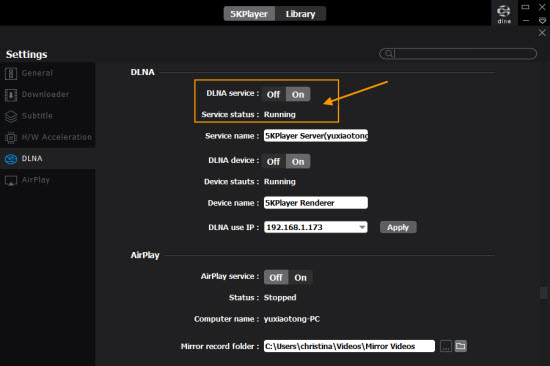
Plex (Windows/Mac/Linux) We expected Plex to get some love in the nominations, but we didn't. Upnp and dlna only work in theory, not in the real world never seen any of it work on any harware/software my nas is supposed to support samba and ftp and dlna: vlc can find nothing. So many ways to fail at basic task of allowing access to files over a network. Zeroconf, plays for sure, plug and play, dhcp, samba, upnp. All a complete joke. 2019 and still no amount of money can buy a computer.

If you have a large collection of local photos, music and videos, you may want to access these media files on all your devices, such as desktop PC, laptop, streaming boxes, smart TV, smart phones, tablets, etc.
Connecting PC to your TV is dead simple. It’s just an HDMI cable away. All you need is an HDMI cable provided both your PC and TV have the HDMI port, the HDMI-out port on PC and the HDMI-in port on TV. What you need to do is connecting one end of the HDMI cable to the HDMI-out port on your PC and the other end to the HDMI-in port on the TV. On your TV side, choose the input source to the connected HDMI port. An HDMI cable is not expensive. Before you buy one, you need to choose the HDMI version, HDMI 1.4, 2.0 or both supported, and cable length. You may need a VGA cable if your computer or TV is old. If you do not have an applicable cable for wired connection and screencast between PC and TV, you can refer to following wireless video streaming solutions.
If your PC and TV are DLNA-enabled, you can directly play media files from computer on to TV big screen without any cable. See this step-by-step guide to cast photos, music and videos from PC to TV using the system built-in programs in Windows 10. No need any third-party software required.
Today, we will talk about how you can set up DLNA or UPNP media streaming server on Windows 10 computer so you can access media content from any other devices. For example, you can access and play music and movies stored on your PC from your mobile phone without replying on copying these media files from computer to cell phone.
Enabling DLNA Media Server via Windows Media Player in Windows 10
Microsoft Windows Media Player can still be found in Windows 10, although not updated for couple of years. Run Windows Media Player on your PC, select Stream on the toolbar, and choose “Automatically allow devices to play my media“, you will be prompted to select the shared folder, library and device, select and share Photo, Video and/or Music.

In Windows Media Player, select “More streaming options” on its toolbar, where you can choose which PCs and devices are allowed to access the shared content on your computer. If you see some unknown devices, in this device list, click on it to open its properties dialogue, you can then find out its Mac address and IP address. Every device in your local network has its unique Mac and IP addresses. For example, you can follow this guide to find out IP address on Windows 10 computer.

Setup DLNA Media Server from Control Panel in Windows 10
Right click on the Start button at the bottom left corner on your Windows 10 PC, choose Control Panel from the pop-up menu, then search “media” without the quotes at the top right corner of the Control Panel home screen. Click the “Media streaming options” link in the Network and Sharing Center section. Follow on-screen tips to turn on media streaming, name your media library, allow devices to access your shared media, select media type(s) to share and finally finish the setup of media streaming server on Windows 10 computer.
Adding content to media server in Windows 10
When you have turned on media streaming and authorized the devices in Windows Media Player, you need to choose what songs, pictures and movies that can be streamed over the network. By default, all the music that you load in the “My Music”, photos in the “My Pictures”, and movies in the “My Videos” folders gets added to your PC’s media library. If you want to add more media files saved in other locations or folders to share and make them available to any other devices on your network, you do not have to move or copy the actual media files to the current media library folders. You can add new folders to the libraries instead. To do that, run Windows Media Player for Windows 10, then click the Organize button and choose Manage Libraries from the drop-down menu. In the sub-menu, you will find four media types: Music, Videos, Pictures, and Recorded TV. Choose the media type first, then go to add new folders and locations to be monitored for that type of media and add more photos, videos, and/or songs to the media libraries of Windows Media Player and media server on your Windows 10 computer.